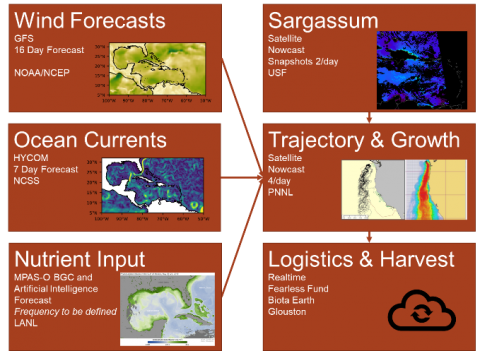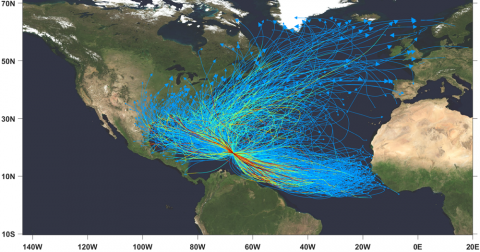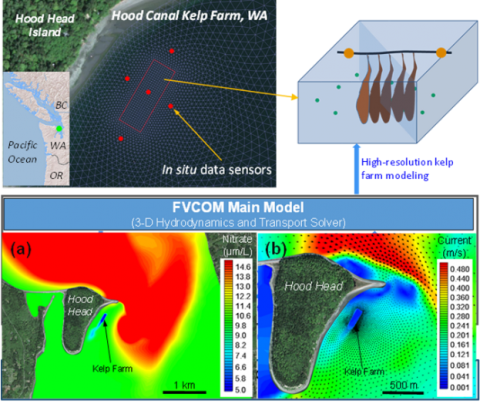Macroalgae
Macroalgae is a potentially valuable energy resource, but significant advances in its domestication and farming technologies are needed to increase productivity and support a seaweed-to-fuels industry. The development of advanced modeling tools can help understand the nature of macroalgae production, as well as reduce deployment costs, operational risk, and potential impacts on the marine environment.

Projects
Multiresolution, Multiscale Modeling for Scalable Macroalgae Production
Successful deployment of large-scale marine macroalgae farms for fuel production strongly depends on not only innovative designs of cultivation and harvesting systems, but also on ambient hydrodynamic and nutrient conditions. This project developed a set of coupled models to simulate macroalgae growth, nutrient uptake and structure-hydrodynamic interactions using a multi-resolution, multiscale modeling framework.


Ocean Energy from Macroalgae.
Sargassum is an ideal species to achieve DOE’s goal for large-scale production. Its free-floating nature reduces costs, seeding, and farm equipment normally associated with traditional mariculture. Led by Fearless Fund, this project seeks to mitigate the damage of large-scale Sargassum beachings and repurpose the biomass through optimized harvest for energy and economic uses. The Ocean Dynamics Modeling group supports the project by developing a Sargassum forecast system to predict the trajectory and biomass growth of Sargassum in the tropical region.

The Development of Techniques for Tropical Seaweed Cultivation and Development.
In this project, the PNNL team will develop a high-resolution coupled wave and storm surge model for the proposed project sites in Puerto Rico and West Florida. Model results from the storm surge and wave model, together with the CariCOOS hydrodynamic model, will be used to support the hydrodynamic load modeling and the fine-scale LES/macroalgae simulations at the project sites. A methodology will be developed to assess the threshold current distribution induced by hurricanes passing through the project sites.

Quantifying Nitrogen Bioextraction by Seaweed Farms – A Real-time Modeling-Monitoring Case Study in Hood Canal, WA
In this project, the research team is conducting an integrated numerical modeling and field monitoring study at the Hood Canal Kelp Farm in Washington, to quantify the rate and effectiveness of nitrogen bioextraction by the kelp farm. A coupled hydrodynamics-macroalgal growth model will be used to simulate kelp growth, nutrient uptake, and the physical interaction between kelp and ambient currents at a meter-level spatial resolution.